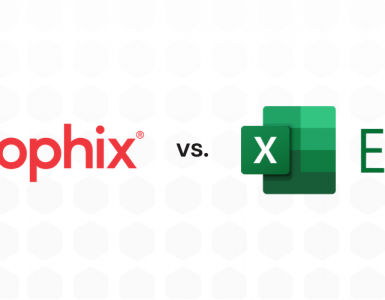“Yesterday’s truth is today’s [BS],” writes the iconoclastic best-selling author of Radical Honesty, Brad Blanton. “Even yesterday’s liberating insight is today’s jail of stale explanation.”
So it is that most mid-market companies ($50 million to $1 billion in revenue) are imprisoned by the stale belief that better tools for financial reporting, budgeting and planning effective are only for the biggest enterprises.
In fact, Financial Planning and Analysis (FP&A) tools exist for mid-market companies and can provide significant competitive advantage by dramatically speeding up processes such as budgeting, analysis, planning and reporting while also reducing errors and omissions. FP&A software does this by automating and consolidating diverse corporate data streams (financial, operational, sales, etc.) across all departments. As a result, data becomes useful instead of being an overwhelming resource that is collected but barely used.
But most mid-market companies are still using time-consuming, error-prone spreadsheet-based systems for budgeting, planning and financial consolidations, believing they don’t have the time or resources to implement digital management tools that will enable them to run their businesses better. The most commons explanation is, “our finance people are too busy running our business to adopt a new system.” Meanwhile, these highly trained finance professionals serve as little more than clerical data-entry staff, spending countless hours entering and re-entering data and formulas, or copying and pasting between cells and worksheets.
In fact, automating these processes would free financial professionals from what is essentially tedious work, giving them the time to perform useful analysis on the data, to understand which parts of the company are profitable, where the company should invest resources to maximize profitability, and which processes hinder or help productivity. Once they start doing those things, the Finance Department evolves from being the people who report what happened in the past — proverbial bean counters. Instead Finance becomes a value creator in the company, able to inform strategic direction.
Consider the monthly reporting cycle for most mid-market companies. Finance imports data from all departments. Just getting the data is a time-consuming back-and-forth chore, often requiring multiple requests and conversations. Then they must copy and paste – or re-key – the data into spreadsheets – a process that almost guarantees the introduction of errors. Next, they attempt to format the data consistently and link data across spreadsheet workbooks. It’s a process that easily consumes five to 10 long-hour days. With automation it can be done in a couple of hours.
Freed from the tedium of data collection and consolidation, Finance can spend much more time on value-adding activities, such as running various what-if scenarios. “What if we moved resources from department X to department Y? What if we went to direct sales rather than channel sales? What if we cut telecommunications costs by 8 per cent? Etc.”
Similarly, annual planning and budgeting processes are a nightmare for most mid-market Finance Departments, often requiring late nights and weekends in the office. It’s not uncommon for Finance staffs to spend months on the annual budget process. This includes designing and preparing spreadsheets, sending them to departmental managers, reminding them when the budget figures are due, receiving the spreadsheets back, copying data between spreadsheets, validating the aggregated numbers, synchronizing spreadsheet formats, submitting reports to management, and potentially repeating many of these tasks for different scenarios. In many cases, by the time the budget is finalized, there has been no time available to get a handle on whether the plans are credible.
Conversely, many companies that have adopted FP&A software report that they can reduce a three-month budget process to three weeks. Besides the clear benefits of time saved, the improved process results in a more accurate budget that ties in with the company’s strategic objectives. It enables better validation of whether budgeted resources are realistic and buys time to better determine whether there are excess costs that can be trimmed.
To properly budget, whether annually, quarterly or on a rolling 12-month basis as many firms do now, mid-market management teams need insightful analysis of reliable and metrics. They also need the time and information to examine a variety of scenarios. But most continue to race along on a low-value treadmill, unable to realize the benefits possible from the data going through the Finance Department because of the illogical explanation that Finance doesn’t have time to do things better.
Large enterprises have the resources to deploy large Enterprise Resource Planning systems, but the mid-market needs a different kind of tool that is not only easy to use but also immediately adding value, without extensive customization and maintenance. With the right FP&A software automating low-value processes, mid-market management teams can spend more time using their analytical skills to generate insight on multiple variables. Trends and variances are easier to spot when data is up-to-date, complete, and readily available, giving management the opportunity for better decision making.
The business environment and individual businesses are always changing. Remaining captive to yesterday’s truth may be the greatest inhibitor to achieving tomorrow’s success.






